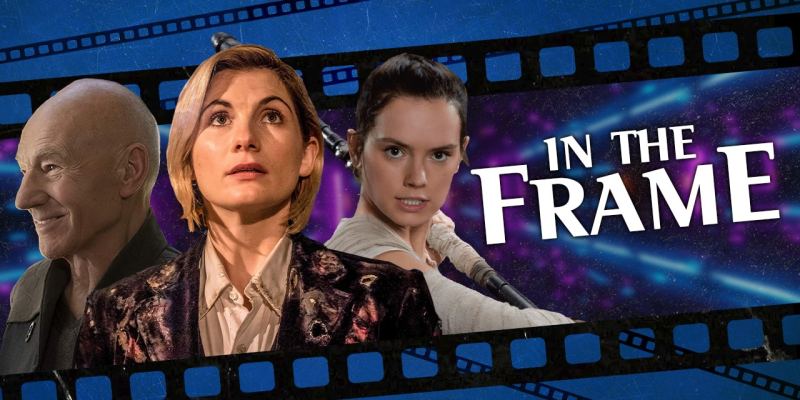Bob Dylan once argued that the times were a-changing. It seems that sometimes they can a-change right back.
If the 2010s were the decade that blockbusters found and lost their ambition and the mainstream went meta, then perhaps the 2020s will be the decade that franchises actively retreat from their bolder ideas. One of the more pronounced recent trends within major franchises might best be described as “narrative revanchism” — a desire to reclaim ground lost or changed.
The most obvious recent example is The Rise of Skywalker, which at points felt less like a film and more like a point-by-point concession to the more aggressive critics of The Last Jedi. The film erased many of the more compelling and challenging ideas within The Last Jedi, from Rey’s status as a genuine outsider to Kylo Ren’s accession to the role of chief villain.
Something similar happened with Star Trek: Discovery. The first season was controversial among some fans, often tied to its attempts to modernize Star Trek. The second season felt like a line-by-line apology: The Klingons were given hair, holographic technology was removed, more characters from the original Star Trek featured, politics were toned down, and episodic storytelling was increased.
The recent reinvention of Doctor Who also suffers from this. Previous showrunner Steven Moffat pushed the show towards a self-awareness that rankled some fans, explicitly challenging core ideas of the series like the power dynamic between Doctor and companion. His successor, Chris Chibnall, has aggressively pushed the show back towards a more traditional and conventional template.

Of course, stories are constantly shifting in new directions. It is often necessary for long-running film and television franchises to reinvent themselves, particularly with changes behind the scenes. Franchises that do not try new things — different things — wither on the vine and die.
However, these franchises are retreating to safe and familiar iconography, displacing new concepts and ideas in the process. The Rise of Skywalker literally resurrected Emperor Palpatine to supplant Kylo Ren as the big bad and killed off the First Order. While Moffat pushed the Doctor away from his characterization as “the Last of the Time Lords,” Chibnall eagerly reestablished the status quo.
Even beyond the regression underlying theses shifts, these choices seem to be driven largely by forces outside the decisions of the creative talent. “For the fans” has become a cynical way of defending critically derided work, implying that pleasing the built-in audience is a higher priority than pleasing wide audiences, but it is often used as a justification and defense of these sorts of choices.
Discussing The Rise of Skywalker before its release, Abrams framed it as “a pendulum swing” away from The Last Jedi, remarking, “I don’t think that people go to Star Wars to be told, ‘This doesn’t matter.’” Editor Maryann Brandon was even more candid, stating frankly, “Look, sure, it’s fan service.” It was for the fans, but specifically those fans who hated The Last Jedi.

The modern Star Trek franchise frames itself in similar terms. “Before we lock things down, it’s terribly important to listen to fans, and hear what they like,” argued Alex Kurtzman during press for Picard. “I learned when I started working in the Star Trek world that that’s a really essential part of making these shows.” The addition of hair to the Klingons on Discovery was explicitly a response to fan criticism.
There is a problem with all this deference to perceived fan criticism, especially amplified through social media. After all, social media tends to amplify and distort, to make fringe positions seem like accepted wisdom and heighten polarization.
In this sense, fandom is — by its nature — aesthetically conservative. This is particularly true of what has been termed “affirmational” or “curative” fandom — fandom that arranges itself around concepts like continuity and canon. This is an ideology that thrives on established precedent, such as ship specifications and detailed maps, rather than more abstract concepts like narrative potential.
When Lucas revealed that Darth Vader was Luke’s father in The Empire Strikes Back, Luke wasn’t the only one in denial. James Earl Jones did not believe it either. Many fans questioned it and didn’t know what to make of it. According to Star Wars historian J.W. Rinzler, quoting contemporary press, fans “were divided over whether [Vader] was telling the truth.” The revelation did not fit those fans’ idea of who Luke was or what Star Wars was. Today, that twist is inseparable from Star Wars.

Star Trek fans have a long history of reacting strongly to the franchise’s shifts. When Nicholas Meyer charted a bold new direction with The Wrath of Khan, fans took out ads in Daily Variety and The Hollywood Reporter that read more like threats. His characterization of Kirk in The Undiscovered Country proved so controversial that J.M. Dillard arguably tried to rewrite it in the novelization.
The level of animosity felt towards Deep Space Nine was strong enough that actors like George Takei and Marina Sirtis have publicly criticized it as not reflecting the franchise’s core values. Its storytelling choices proved so controversial that Majel Barrett-Roddenberry, widow of Gene Roddenberry, wrote a letter denouncing it in The Star Trek Communicator.
This is also true of Doctor Who. When Tom Baker returned to Gallifrey for “The Deadly Assassin” in late 1975, with writer Robert Holmes reinventing the Time Lords as stuffy academics, it proved controversial. It was denounced by prominent fans. It was criticized by the president of the Doctor Who Appreciation Society, who complained it went “very much against what has been before.”
In each of these controversial cases, the creative teams stuck to their guns. Return of the Jedi confirmed that not only was Darth Vader father to Luke, but that Luke was brother to Leia. Meyer’s blueprint for Star Trek revitalized the franchise. The characterization of the Time Lords in “The Deadly Assassin” continued into later stories, like Douglas Adams’ long lost “Shada.”
More than that, these seemingly controversial choices became cornerstones for their franchises. For better or worse, Star Trek has spent decades trying to recreate The Wrath of Khan. It is the consensus best Star Trek film, as The Empire Strikes Back is the consensus best Star Wars film. In 2009, “The Deadly Assassin” was ranked the 20th best Doctor Who story ever.

In contrast, it seems unlikely that these recent retreats from bold ideas will be remembered as well. Despite record-breaking presales, The Rise of Skywalker is the lowest-grossing film in the sequel trilogy. It is the first live-action Star Wars film to record an audience CinemaScore lower than an “A-.” It is the worst-reviewed non-animated Star Wars film.
During the ’90s, Voyager offered a completely inoffensive and generic iteration of the Star Trek franchise. The series was heavily retooled from its ambitious premise to turn it into an extension of The Next Generation, downplaying controversial elements like crew conflict or serialization in favor of formula. That generic approach set in motion a gradual decline that would eventually lead to the cancellation of that iteration of the Star Trek franchise.
However, this retreat from novelty is about more than just disappointment and underperformance. It is disappointing to see creators actively retreating from bold and provocative ideas simply because they prove controversial with vocal sections of the fandom and because those sections are amplified by Twitter and an active fan press rather than through fanzines and paid advertisements.
The biggest problem with these retreats is that they replace a strong and distinctive vision of the franchise in question — The Last Jedi, the first season of Discovery, Moffat’s Doctor Who — with a complete absence of vision. These retreats are not defined by what they actively are, beyond offering a generic and uncontroversial version of the franchise, but instead by what they are not.
This actively harms these franchises. Franchises that have been around for decades need more than just curation. They require cultivation. There is a difference between what a franchise has always looked like and what it could possibly look like.
